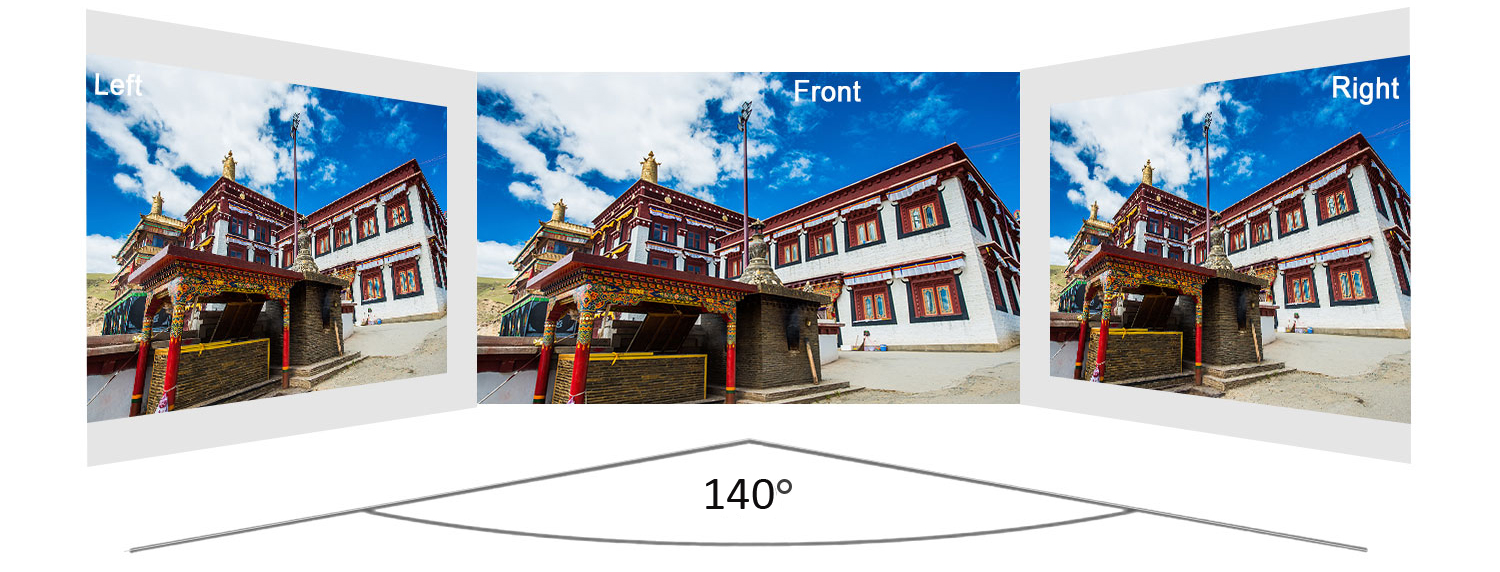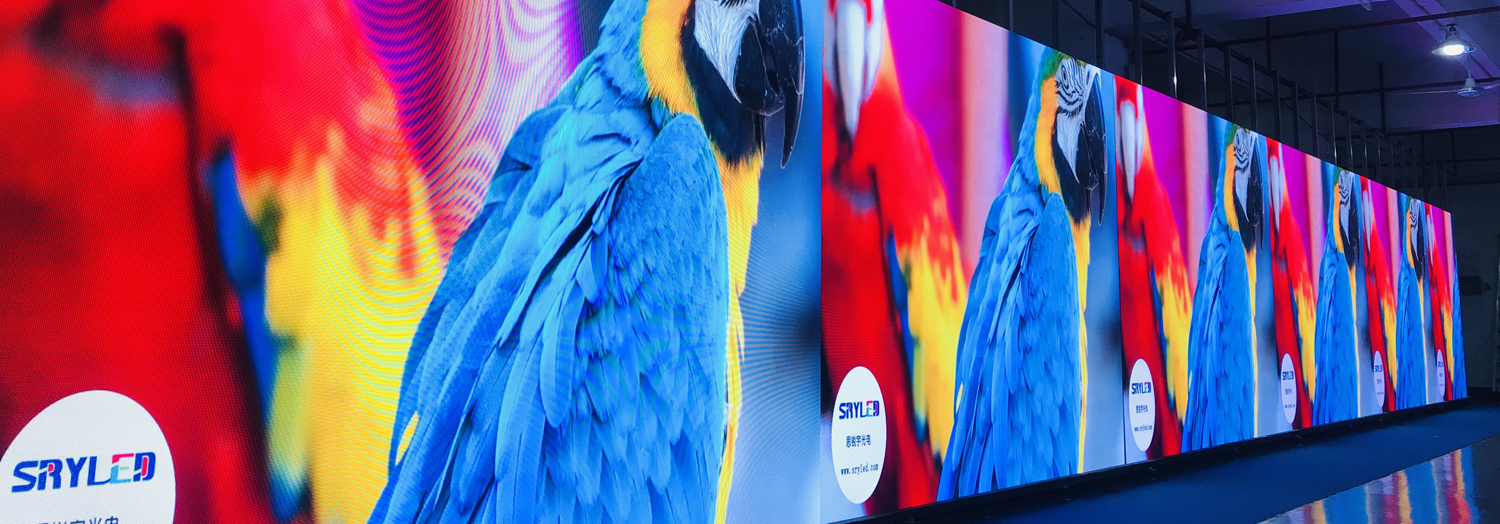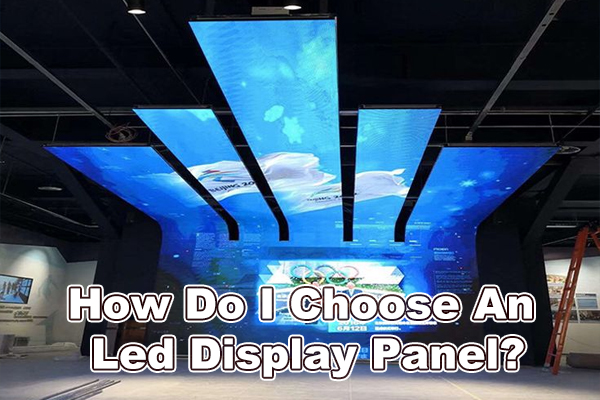1. Viewing Angle
The viewing angle of the LED display depends on the viewing angle of the LED lamps. At present, most outdoor LED display and indoor LED display screens use SMD LEDs with a horizontal and vertical viewing angle of 140°. Tall building LED displays requires higher vertical viewing angles. The viewing angle and brightness are contradictory, and a large viewing angle will inevitably reduce the brightness. The choice of viewing angle needs to be determined according to the specific use.
2. Brightness
The brightness of the LED lamp bead is an important determinant of the brightness of the LED display. The higher the brightness of the LED, the greater the margin of the current used, which is good for saving power consumption and keeping the LED stable. LEDs have different angle values. When the brightness of the chip is fixed, the smaller the angle, the brighter the LED, but the smaller the viewing angle of the display. Generally, a 120-degree LED should be selected to ensure sufficient viewing angle of the display. For displays with different dot pitches and different viewing distances, a balance point should be found in brightness, angle and price.
3. Failure rate
Since full color LED display is composed of tens of thousands or even hundreds of thousands of pixels composed of red, green and blue LEDs, the failure of any color LED will affect the overall visual effect of the whole LED display. Generally speaking, the failure rate of LED display should not be higher than 3/10,000 before the LED display starts to be assembled and aged for 72 hours before shipment.
4. Antistatic ability
LED is a semiconductor device, which is sensitive to static electricity and can easily lead to static electricity failure. Therefore, the anti-static ability is very important to the life of the display screen. Generally speaking, the failure voltage of LED human body electrostatic mode test should not be lower than 2000V.
5. Consistency
Full color LED display screen is composed of pixels composed of numerous red, green, and blue LEDs. The consistency of the brightness and wavelength of each color LED determines the brightness consistency, white balance consistency, and chromaticity consistency of the entire display screen.
Full color LED display has angular directionality, that is, its brightness will increase or decrease when viewed from different angles. In this way, the angular consistency of red, green, and blue LEDs will seriously affect the consistency of white balance at different angles, and directly affect the fidelity of the video color on the display. To achieve the matching consistency of the brightness changes of red, green and blue LEDs at different angles, it is necessary to strictly carry out scientific design in the design of the packaging lens and the selection of raw materials, which depends on the technical level of the packaging supplier. No matter how good the normal direction white balance is, if the LED angle consistency is not good, the white balance effect of different angles of the whole screen will be bad.
6. Attenuation characteristics
After the LED display works for a long time, the brightness will drop and the color of the display will be inconsistent, which is mainly caused by the brightness attenuation of the LED device. The attenuation of LED brightness will reduce the brightness of the entire LED display screen. The inconsistency of the brightness attenuation of the red, green and blue LEDs will cause the inconsistency of the color of the LED display. High quality LED lamps can well control the magnitude of brightness attenuation. According to the standard of 20mA lighting at room temperature for 1000 hours, the red attenuation should be less than 2%, and the blue and green attenuation should be less than 10%. Therefore, try not to use 20mA current for blue and green LEDs in the display design, and it is best to use only 70% to 80% of rated current.
In addition to the attenuation characteristics related to the characteristics of the red, green and blue LEDs themselves, the current used, the heat dissipation design of the PCB board, and the ambient temperature of the display screen all affect the attenuation.
7. Size
The size of the LED device affects the pixel distance of the LED display, that is, the resolution. Type SMD3535 LEDs are mainly used for P6, P8, P10 outdoor LED display, SMD2121 LED is mainly used for P2.5, P2.6, P2.97, P3.91 indoor screen. On the premise that the pixel pitch remains unchanged, the size of the LED lamps increases, which can increase the display area and reduce the graininess. However, due to the reduction of the black area, the contrast will be reduced. On the contrary, the size of the LED decreases, which reduces the display area and increases the graininess, the black area increases, increasing the contrast rate.
8. Lifespan
The theoretical lifespan of LED lamp is 100,000 hours, which is much longer than other components of the LED display lifespan. Therefore, as long as the quality of the LED lamps is guaranteed, the working current is suitable, the PCB heat dissipation design is reasonable, and the display production process is rigorous, the LED lamps will be the most durable parts for LED video wall.
LED modules account for 70% of the price of LED displays, so LED modules can determine the quality of LED displays. The high technology requirements of LED display screen are the future development trend. From the control of LED modules, to promote China’s transformation from a large LED display manufacturing country to a powerful LED display manufacturing country.
Post time: Apr-24-2022










